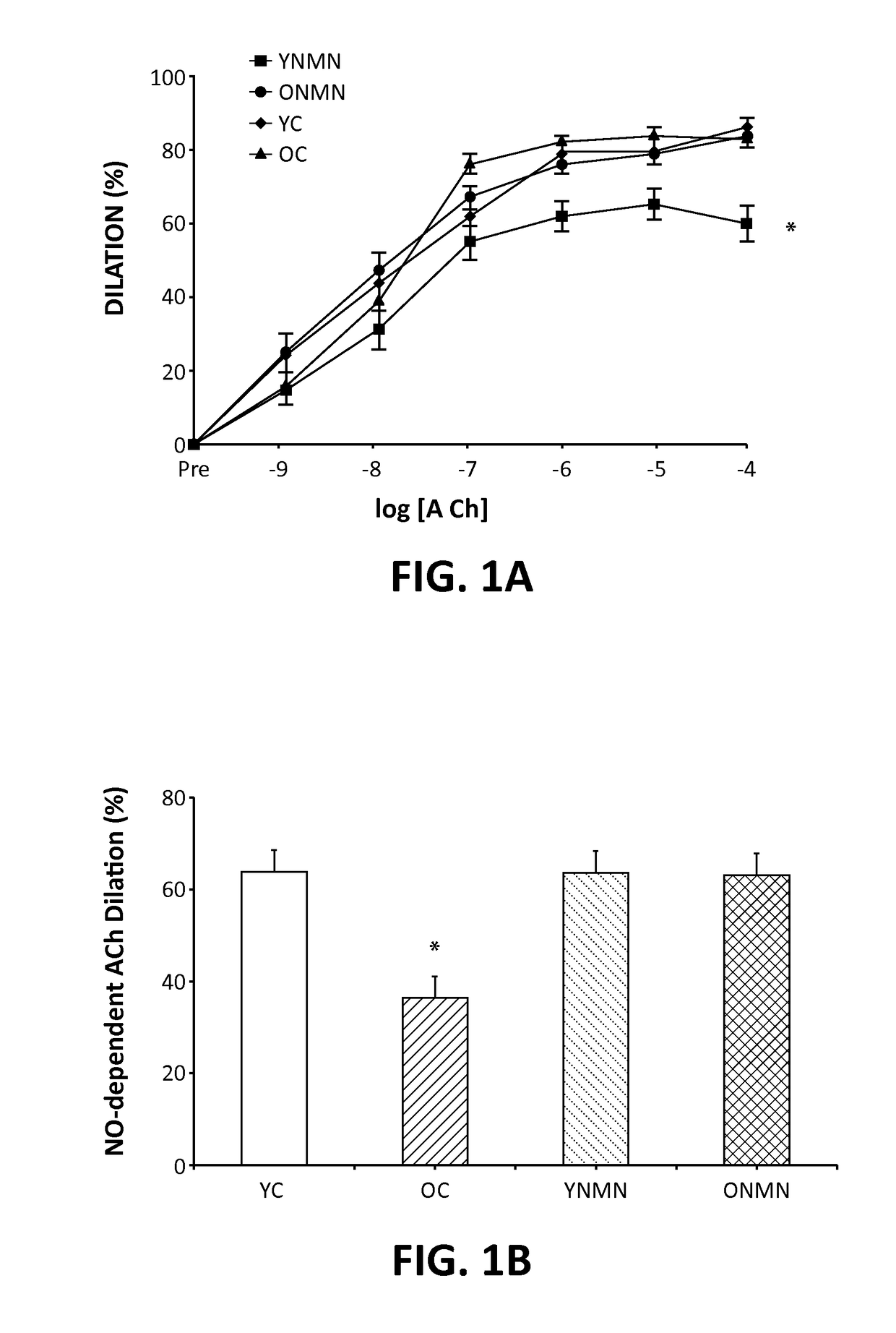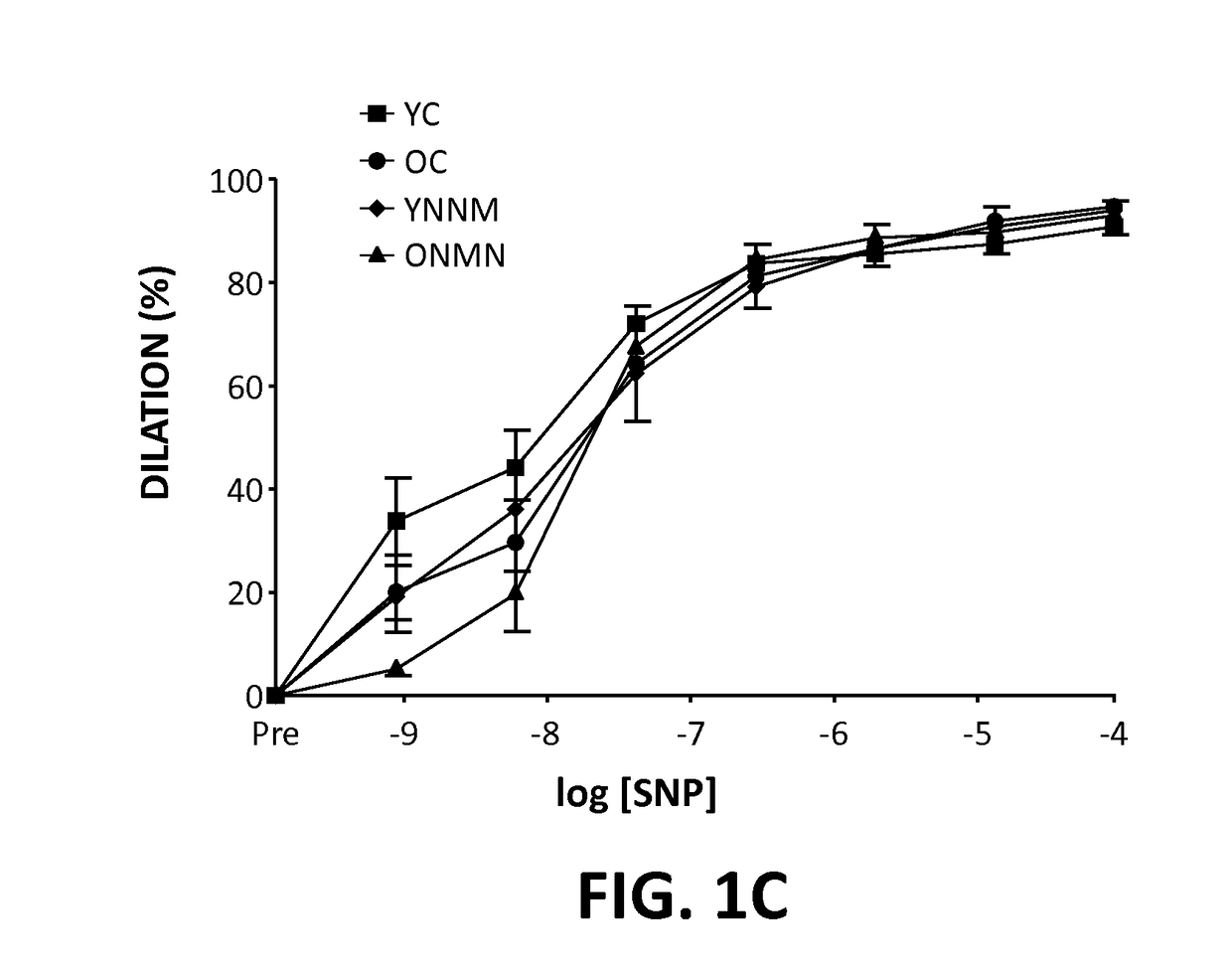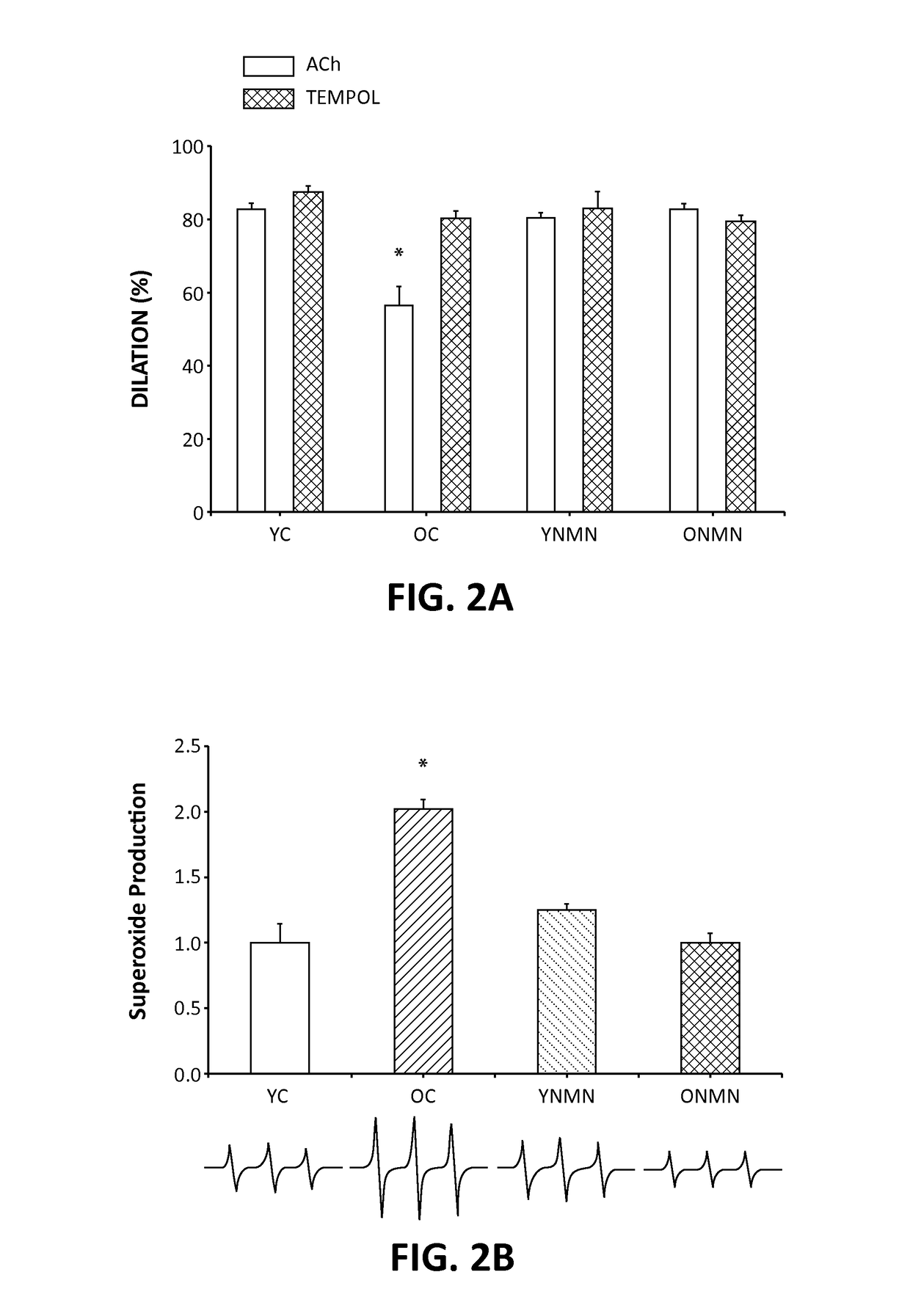Methods for treatment of vascular endothelial dysfunction using nicotinamide mononucleotide
a technology of nicotinamide and vascular endothelial cells, applied in the direction of drug compositions, anti-noxious agents, medical preparations, etc., can solve the problems of aging increasing the risk of cvd largely, increasing aortic stiffness, and cvd burden projections, so as to reverse age-associated vascular dysfunction, improve vascular function, and reduce inflammation and oxidative stress
- Summary
- Abstract
- Description
- Claims
- Application Information
AI Technical Summary
Benefits of technology
Problems solved by technology
Method used
Image
Examples
example
[0041]Supplementation of nicotinamide mononucleotide (NMN), a key NAD+ intermediate, as potentially activating the mammalian NAD+-dependent deacetylase SIRT1 and reverses age-associated vascular dysfunction and oxidative stress was tested. Old control mice (OC) had impaired carotid artery endothelium-dependent dilation (EDD) (60±5 vs. 84±2%), a measure of endothelial function, and nitric oxide (NO)-mediated EDD (37±4 vs. 66±6%), compared with young mice (YC). This age-associated impairment in EDD was restored in OC by the superoxide (O2−) scavenger TEMPOL (4-hydroxy-2,2,6,6-tetramethylpiperidin-1-oxyl; 82±7%). OC also had increased aortic pulse wave velocity (aPWV, 464±31 vs. 337±3 cm / s) and elastic modulus (EM, 6407±876 vs. 3119±471 kPa), measures of large elastic artery stiffness, compared to YC. OC had greater aortic O2− production (2.0±0.1 vs. 1.0±0.1 AU), nitrotyrosine abundance (a marker of oxidative stress), and collagen-I, and reduced elastin and vascular SIRT1 activity, mea...
PUM
 Login to View More
Login to View More Abstract
Description
Claims
Application Information
 Login to View More
Login to View More - R&D
- Intellectual Property
- Life Sciences
- Materials
- Tech Scout
- Unparalleled Data Quality
- Higher Quality Content
- 60% Fewer Hallucinations
Browse by: Latest US Patents, China's latest patents, Technical Efficacy Thesaurus, Application Domain, Technology Topic, Popular Technical Reports.
© 2025 PatSnap. All rights reserved.Legal|Privacy policy|Modern Slavery Act Transparency Statement|Sitemap|About US| Contact US: help@patsnap.com



